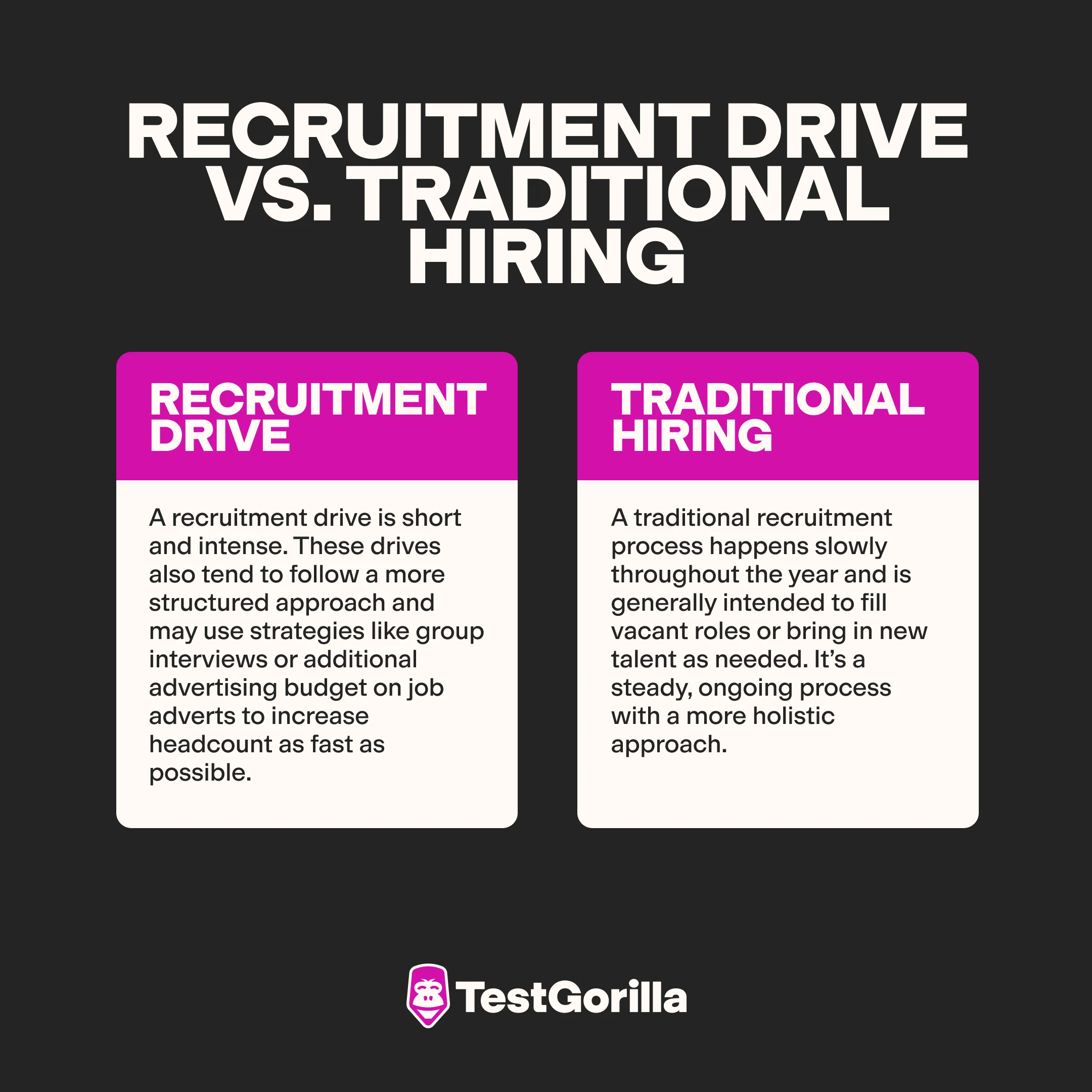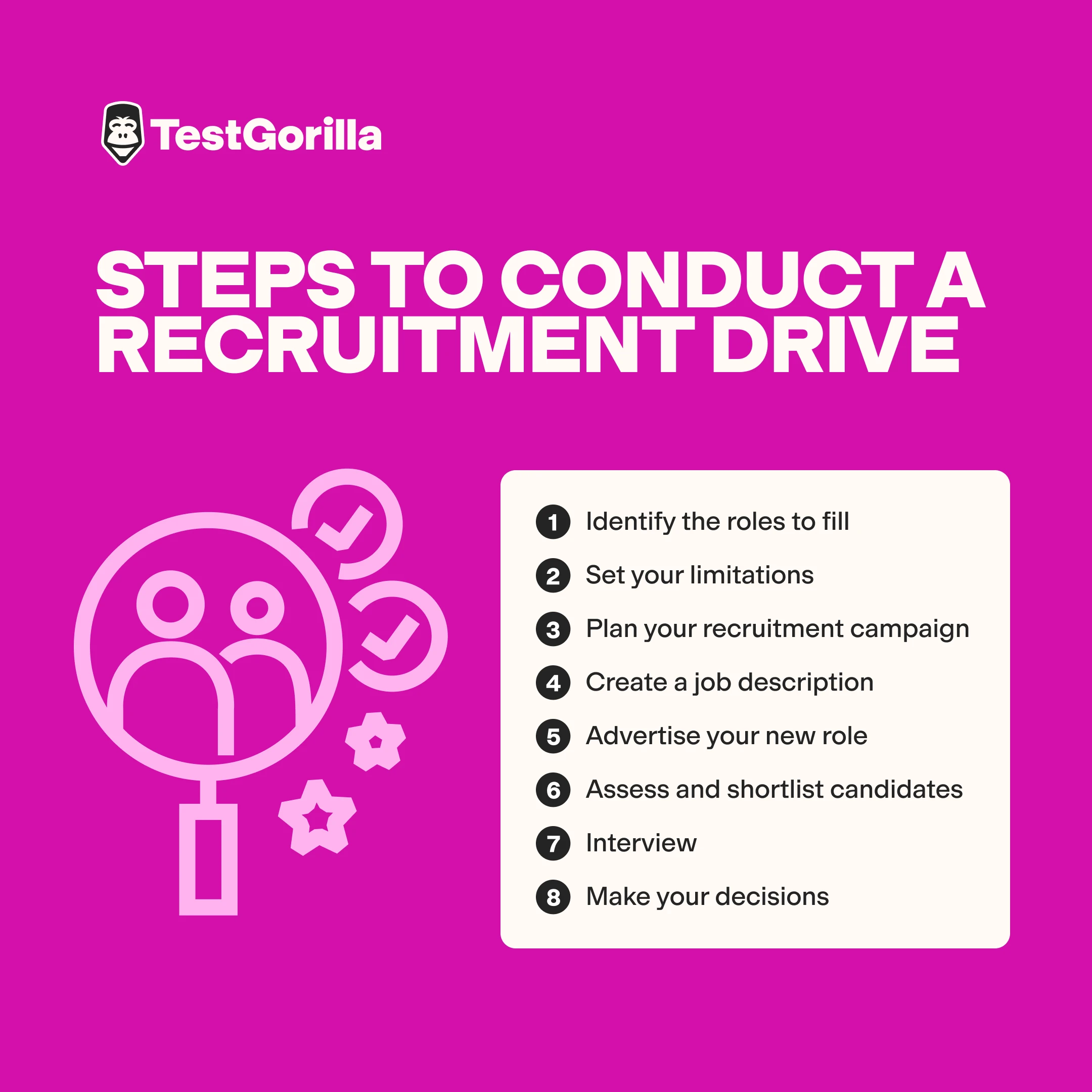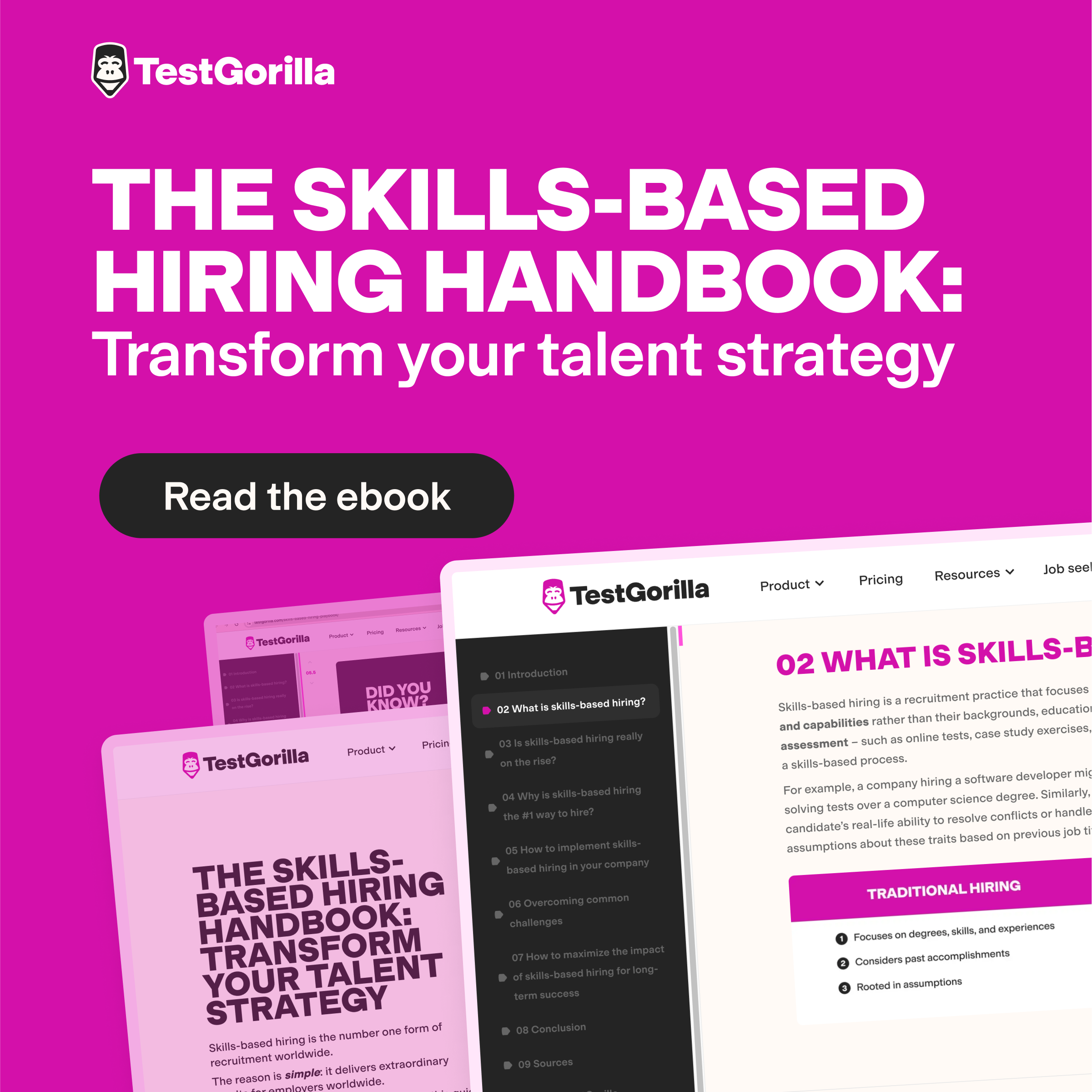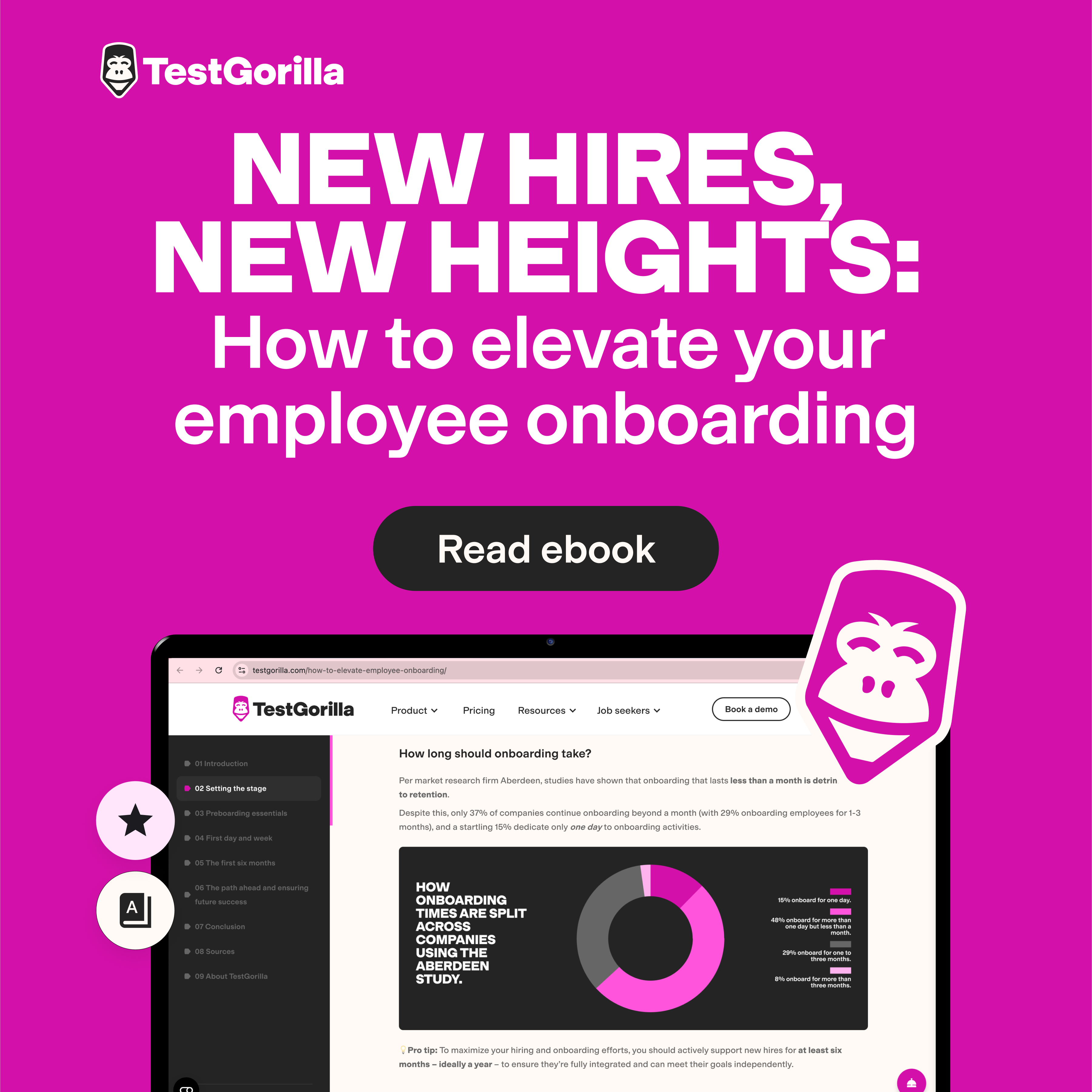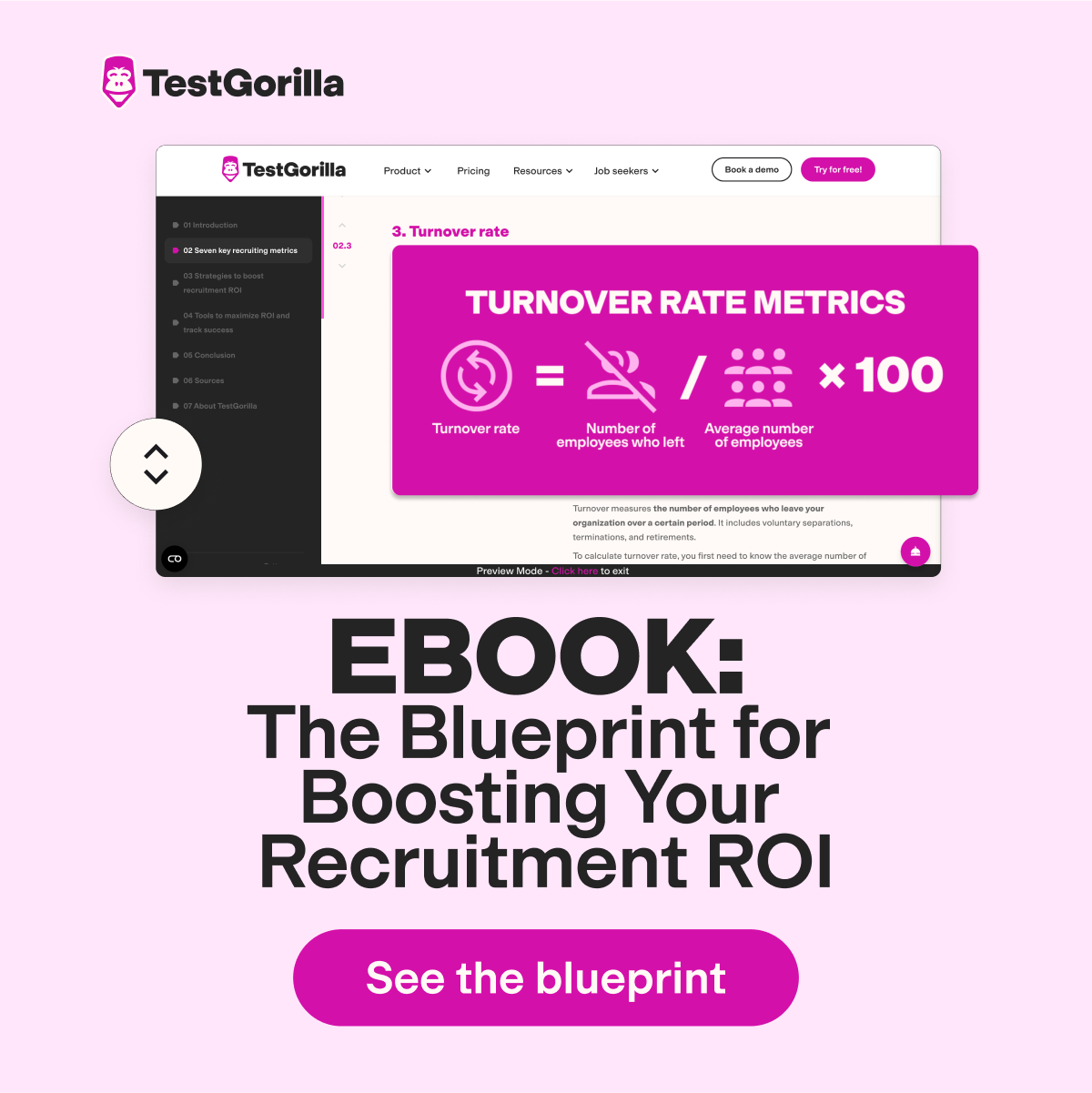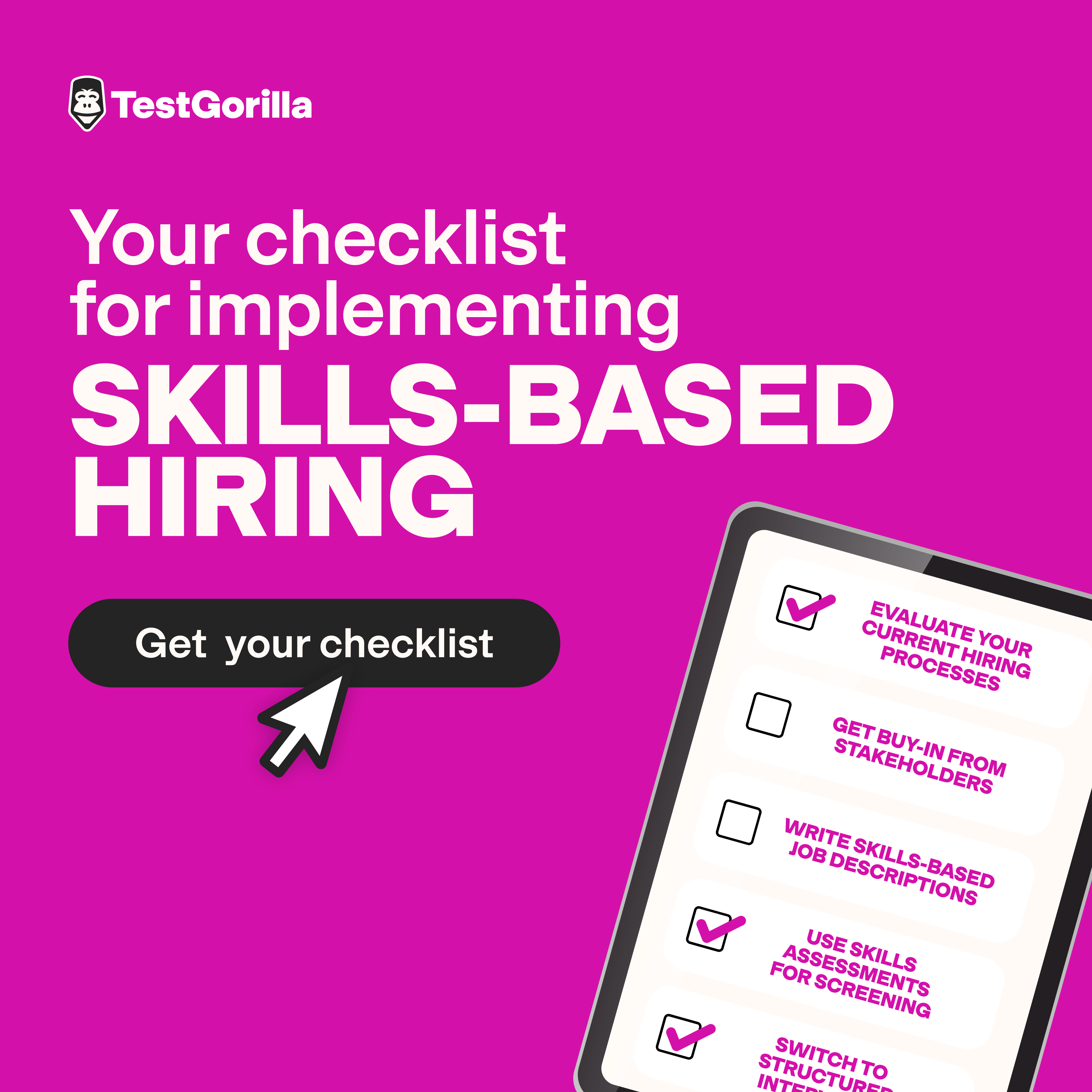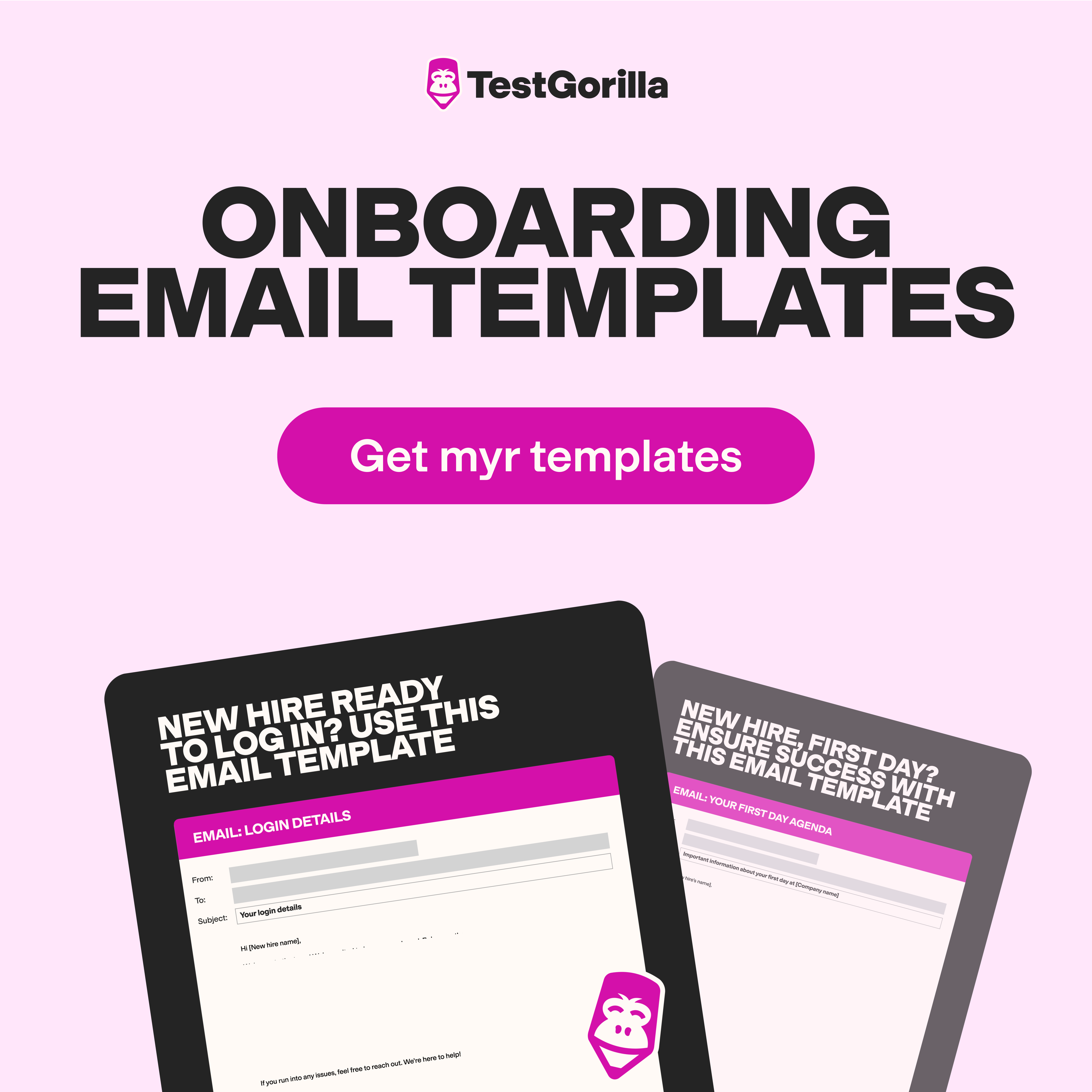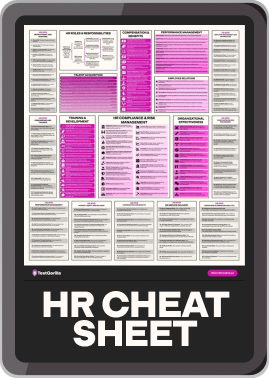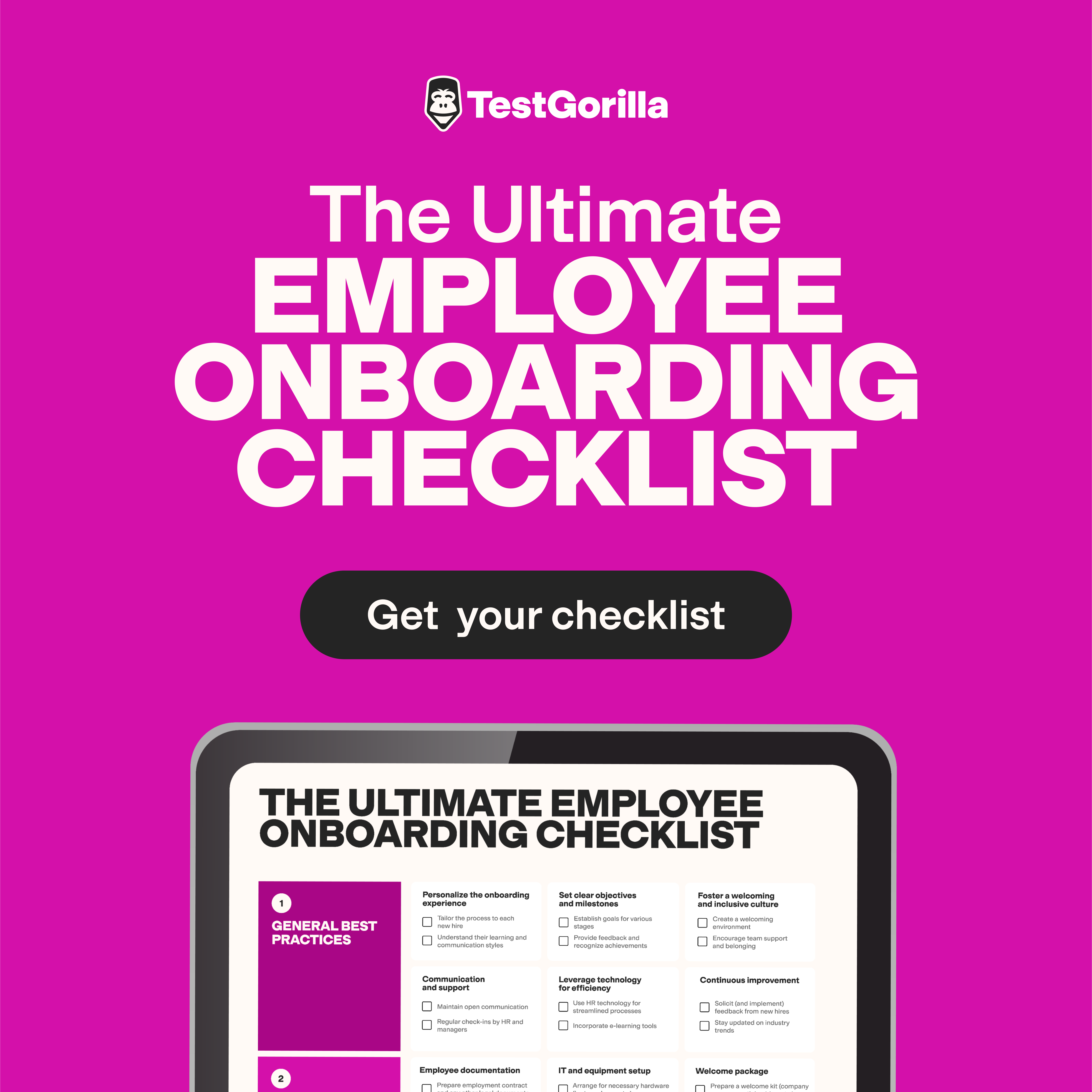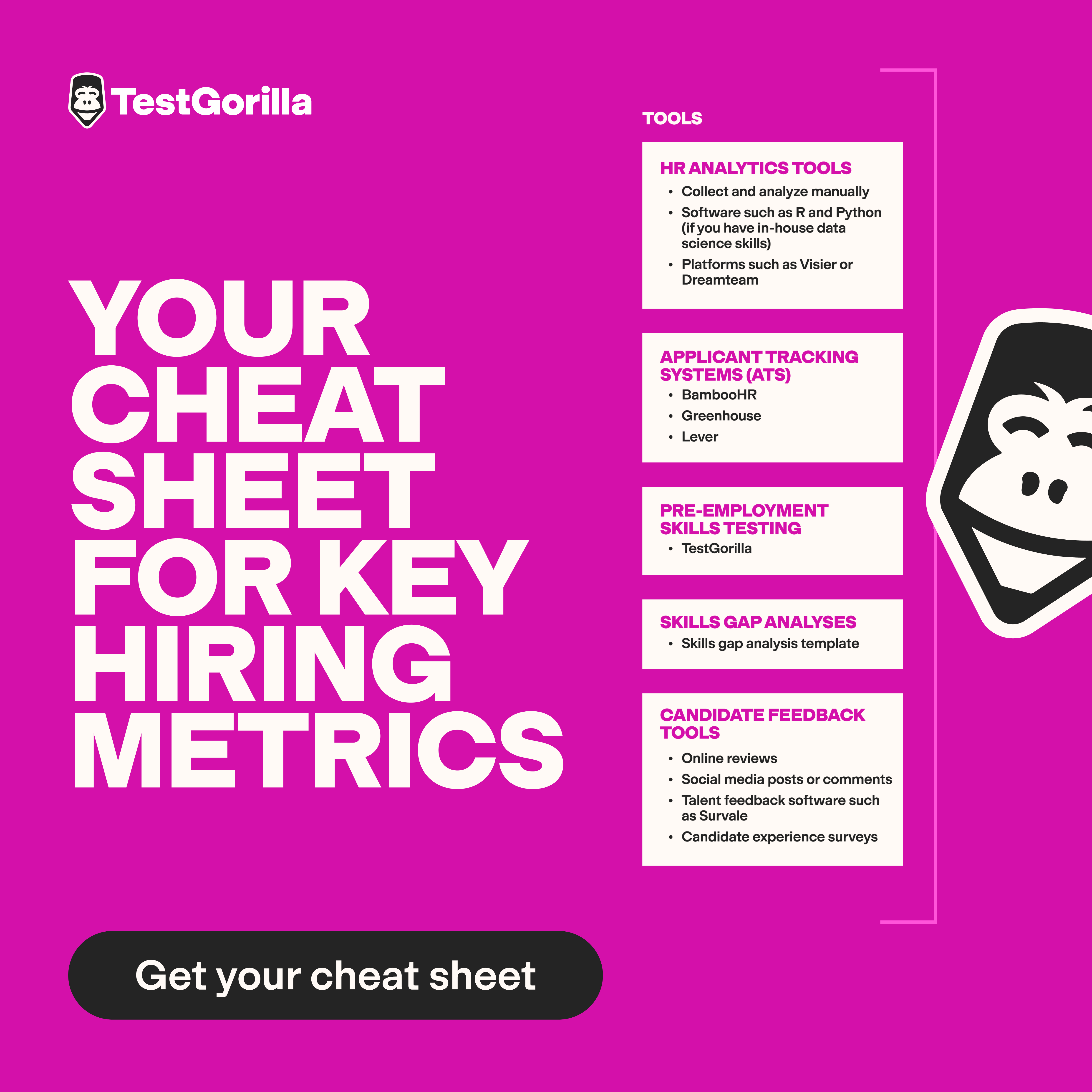A recruitment drive is a short period of focused recruitment activity. Its purpose is to bring in new hires quickly or fill multiple roles simultaneously.
A recruiting drive usually occurs before a period of peak business activity or if a company needs to scale up operations quickly. For example, retail businesses may conduct a recruitment drive ahead of the holidays, or a tech start-up may ramp up recruitment before launching a new product.
Recruitment drive vs. traditional hiring
A traditional recruitment process happens slowly throughout the year and is generally intended to fill vacant roles or bring in new talent as needed. It’s a steady, ongoing process with a more holistic approach.
On the other hand, a recruitment drive is short and intense. These drives also tend to follow a more structured approach and may use strategies like group interviews or additional advertising budget on job adverts to increase headcount as fast as possible.
Why do companies run recruitment drives?
There are many reasons why a company might run a recruitment drive, including:
To meet seasonal demand
A recruitment campaign might occur right before a business experiences a seasonal peak. For example, a beach bar might launch a recruitment campaign before the summer, or a ski resort might ramp up in the winter.
To fulfill the needs of a project
Businesses can use recruitment campaigns to hire quickly for a specific project that needs all hands on deck – e.g., opening a new location, a product launch, or a tight project deadline.
To remedy high turnover
When companies have lost a lot of employees, they need to fill roles quickly to prevent a dip in productivity. A recruitment drive can help bring teams back to full numbers ASAP.
To promote diversity
A recruitment campaign targeting underrepresented groups can help create a more balanced, inclusive workforce where everyone’s views matter. Read our guide to learn more about the benefits of hiring a diverse workforce.
How to run a recruitment drive
Try following these steps to conduct a recruitment drive:
1. Identify the roles to fill
Determine how many roles you want to fill and how they fit into your business structure. Are they in the same team, do they require different skills, and are any of them management roles? Knowing this will help you stay focused and better tailor your recruitment strategy.
Pro tip: It’s also a good idea to prioritize the roles. Are there any you need to fill on short notice, or can they all be filled within a similar time frame? Making this distinction will help you effectively plan your resources.
2. Set your limitations
When prepping for a recruitment drive, you must plan within your means. You should consider:
Time
How much time do you have to hire these roles? Be realistic and honest with your team about how long each stage of the process will take so they can plan accordingly.
Budget
How much do you have to spend on your direct recruitment campaign, and where do you want to allocate the funds? Your budget should consist of advertising spend, recruiter salaries (including overtime expectations), and the cost of any tools and platforms you need.
Resources
Consider the capacity of your other resources. For example, can your HR team handle the increased onboarding workload, or are your managers equipped to manage teams of the planned scale? Use this opportunity to assess whether your budget allows for extra support or if there’s scope to increase the recruitment timescale.
3. Plan your recruitment campaign
Next, decide what type of recruitment campaign you’re holding. Types include:
Internal hiring campaigns: Focused on recruiting current employees into more senior positions.
External hiring campaigns: For recruiting new talent into your business.
Virtual hiring events: Used when hiring a remote team or filling roles across multiple locations.
Seasonal hiring campaigns: Used for businesses that experience seasonal peaks and troughs – e.g., those in hospitality, retail, or tourism.
The type of hiring campaign you conduct will change the way you approach sourcing, screening, and onboarding.
4. Create a job description
The next stage is to write your job description(s). We suggest writing a skills-based job description based on the role(s) you’re hiring for. This can help you find the right candidates faster by focusing on key skills.
5. Advertise your new role
Then, advertise your job role(s) and wait for the applications to roll in. To attract as many suitable candidates as possible, try posting on:
Generic job boards
Industry-specific job boards
Independent recruiters
Social media
Your company website
6. Assess and shortlist candidates
The next step is to evaluate and shortlist candidates. The best, most effective way to do this is through talent assessments, not old-school techniques like resume screening.
With a talent assessment like TestGorilla, you can assess candidates’ technical skills, soft skills, and other capabilities to separate top talent from those who aren’t the right fit.
TestGorilla enables you to create a custom assessment of up to five tests (and we have hundreds in our library) so you can measure for the exact traits your role(s) require. What’s more, TestGorilla will automatically score and benchmark candidates, taking the guesswork out of your shortlisting process.
7. Interview
Once you have your shortlist, schedule virtual or in-person interviews with your candidates. We recommend asking behavioral questions during the interview and conducting technical assessments if needed.
To rank your interviewees, also consider their talent assessment results. Those who perform best in the interview stage should advance to the offer stage.
Pro tip: Ask your candidates if they have any accessibility needs or require reasonable adjustments to attend the interview. Proactively offering these promotes a fair and inclusive environment and highlights that your business values diversity.
8. Make your decisions
Congratulations! You’ve found your candidates. Reach out to the successful applicants and offer them the positions.
Be sure to wait until you’ve heard back from all candidates before sending rejections. You wouldn’t want to make an offer only to find out the candidate has accepted a different role and you’ve already rejected the other candidates.
The best insights on HR and recruitment, delivered to your inbox.
Biweekly updates. No spam. Unsubscribe any time.
FAQs
Want more info on recruitment drives? Here are answers to some common questions.
Do I need recruiters for a recruitment drive?
You’ll need someone to recruit during a recruitment drive, but these individuals don’t need to be dedicated recruiters. They can be hiring managers, supervisors, or even HR professionals.
What does recruitment mean in business?
Recruitment is the process of finding people to fill vacant roles. This can be via a recruitment drive or traditional hiring processes.
Related posts
You've scrolled this far
Why not try TestGorilla for free, and see what happens when you put skills first.


